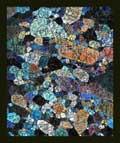Nickel extraction by volcanoes

The sulfide is very important when extracting the nickel metal, which is the one that binds the nickel atoms. Therefore, nickel sulfide is the predominance of the current nickel pits. But where does this sulphur come from? Volcanoes. A group of Canadian geochemicals have found this response in ancient rocks from western Australia and Canada. Two abnormal isotopes of sulfur (sulfur 33 and sulfur -32) have been found in these rocks. Only the ultraviolet light of the sun can produce these two isotopes decomposing the gas sulfur dioxide.
With all this information they have concluded that the volcanic eruptions that occurred on Earth emitted huge amounts of sulfur dioxide into the atmosphere. Solar rays break down this gas and create two atypical isotopes of sulfur. This sulfur has reached the terrestrial surface with rain and has been accumulating in the marine bottom until becoming sulphur. Subsequently, this sulfide has been mixed with the nickel of the volcanic magma for the application of nickel mineral sulfide. The journal Science tells of this long process that has lasted decades.
This discovery shows that the processes that occur in the oceans, the atmosphere and the terrestrial surface have to do with the formation of minerals.Image: Image: Marco Fiorentini
Buletina
Bidali zure helbide elektronikoa eta jaso asteroko buletina zure sarrera-ontzian











